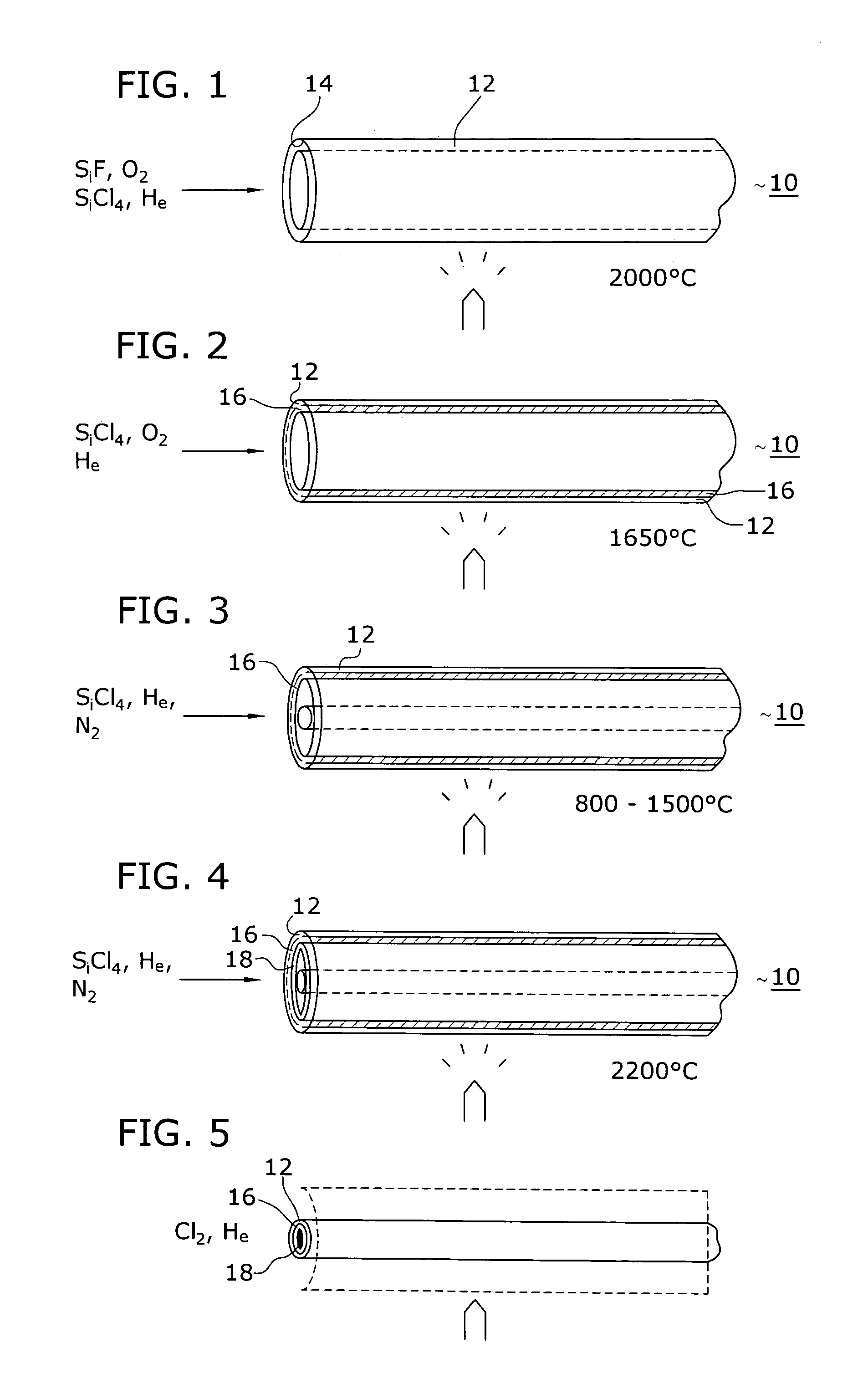Hydrogen resistant optical fiber formation technique
a technology of optical fiber and hydrogen, which is applied in the direction of glass production, glass making apparatus, manufacturing tools, etc., can solve the problems of reducing the transmission quality of optical fiber, oxidizing agent, and fibers are more susceptible to hydrogen-induced loss
- Summary
- Abstract
- Description
- Claims
- Application Information
AI Technical Summary
Benefits of technology
Problems solved by technology
Method used
Image
Examples
Embodiment Construction
[0022]The motivation for the concepts developed in accordance with the present invention is to improve the resistance of optical fiber to hydrogen-induced loss typically seen in harsh environments, such as the use of fiber optic sensors within an oil well. Such an environment cannot be well-controlled to guarantee that water or other contaminants will not be present. The silicon defects introduced into the optical fiber during a conventional prior art manufacturing process typically result in SiOH and SiH losses in the fiber, due to the reaction over time between the Si defects and hydrogen. It is thought that the oxygen-rich defects are responsible for the formation of Si—OH and the increased loss at 1385 nm. The oxygen-rich defects arise due to excess oxygen atoms present in the silica glass, resulting from preform fabrication in an environment with too much oxygen. Furthermore, the introduction of impurity dopants (for example, germanium) can generate defects that result in creas...
PUM
| Property | Measurement | Unit |
|---|---|---|
| Temperature | aaaaa | aaaaa |
| Temperature | aaaaa | aaaaa |
| Temperature | aaaaa | aaaaa |
Abstract
Description
Claims
Application Information
 Login to View More
Login to View More - R&D
- Intellectual Property
- Life Sciences
- Materials
- Tech Scout
- Unparalleled Data Quality
- Higher Quality Content
- 60% Fewer Hallucinations
Browse by: Latest US Patents, China's latest patents, Technical Efficacy Thesaurus, Application Domain, Technology Topic, Popular Technical Reports.
© 2025 PatSnap. All rights reserved.Legal|Privacy policy|Modern Slavery Act Transparency Statement|Sitemap|About US| Contact US: help@patsnap.com



